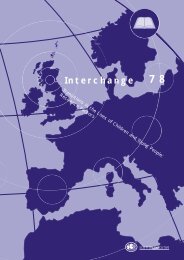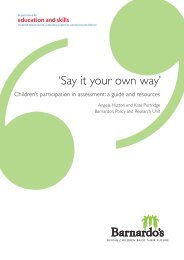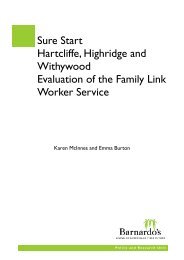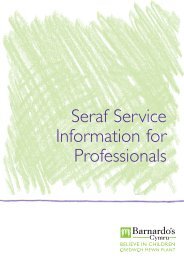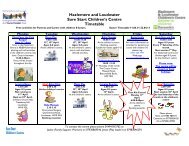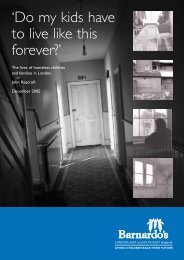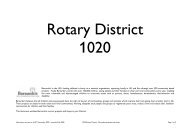Splintered Lives - Barnardo's
Splintered Lives - Barnardo's
Splintered Lives - Barnardo's
You also want an ePaper? Increase the reach of your titles
YUMPU automatically turns print PDFs into web optimized ePapers that Google loves.
PAGE 22<br />
chapter<br />
6 Theoretical perspectives<br />
Whilst several books and articles in the early 1980s (see for example Wolpert Burgess et<br />
al, 1981; Wild and Wynne, 1986) have documented sexual exploitation as a form of<br />
sexual abuse in childhood, in the early 1980s these were the exception not the rule. In a<br />
child protection context it is instructive to remember that changes in paediatric practice,<br />
elements of which were to become problematised during the 'Cleveland crisis',<br />
developed through the investigation of several large sexual abuse rings in Leeds in the<br />
early 1980s (Campbell, 1988 p103-11). Practitioners have been working with, and<br />
researchers investigating sexual abuse outside the nuclear family, cases involving more<br />
than one abuser and many children, with pornography and prostitution, but this has<br />
seldom been reflected in theoretical frameworks, training and practice guidelines. The<br />
exception to this general rule has been the work of some feminists who have sought to<br />
connect the victimisation of women and children; to transfer knowledge and experience<br />
from one sphere to another (MacLeod and Saraga, 1988; Kelly, 1988; Herman, 1994). But<br />
even within feminist perspectives this has not been a central, shared approach.<br />
Whilst much has been written on theoretical approaches to child sexual abuse, the<br />
predominant focus has been on incest. More recently there has been increasing<br />
recognition that this is an inadequate base for explanatory frameworks. Although most<br />
children are abused by adults and peers they know, these are not always - or even in the<br />
majority of cases - family or household members (Kelly, Regan and Burton, 1991).<br />
Theoretical perspectives which take familial sexual abuse as their centre, cannot<br />
encompass sexual exploitation, and moreover have been a hinderance to understanding<br />
and exploring the occasions when familial sexual abuse and sexual exploitation occur<br />
concurrently.<br />
Including child sexual exploitation within child protection frameworks means that<br />
theoretical perspectives from outside the field become relevant, and an extensive<br />
literature exists on adult pornography and prostitution (see, for example, Barry, 1995;<br />
Chester and Dickey, 1988; Delacoste and Alexander, 1988; Donnerstein et al 1987; Itzin,<br />
1993; Osanka and Johann 1989; Roberts, 1993; Russell 1993). Within this literature are a<br />
range of debates which draw on explanatory models; it is rare however, that these are<br />
systematically applied to children's involvement.<br />
In the case of pornography and prostitution, it is feminist perspectives which have<br />
focused on exploitation and harm. The competing frameworks have predominantly<br />
drawn on the concepts of arousal, imitation, catharsis and fantasy.<br />
Sexual Arousal<br />
The sexual arousal model emerged from research, predominantly controlled<br />
experiments, on the immediate effects of viewing pornography. The studies reached the<br />
unsurprising conclusion that sexual arousal was a common outcome, although the sex<br />
of the viewer and the subject in the pornography were significant variables (Donnerstein et<br />
al, 1987; Knudsen, 1988). More recent research has demonstrated that the form of<br />
depictions have an effect on how arousing the pornography is - for example men are<br />
more aroused by representations of coerced sex which suggest that the woman is<br />
--






